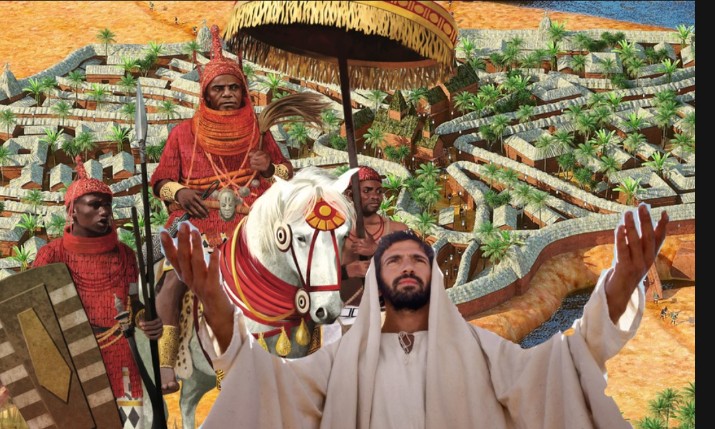The Christians believe that Jesus Christ of Nazareth was born around 6 B.C. During this period, Augustus Caesar was still the Emperor of the Roman Empire. Tiberius was already on the throne for about 16 years during this time.
Jesus, who was a first-century Jewish preacher and religious leader, was a public figure of the Christian religion which remains the world’s largest religion till date. It would surprise you to know that Jesus actually lived in Africa for a few months as a little child. We are going to be taking a look at what was going on in Africa during the time of Jesus.
What Was Happening In Egypt?
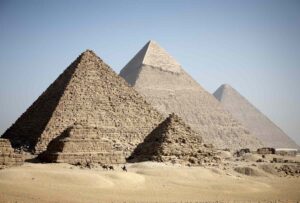
We begin with North Africa – Egypt to the precise. We’ll start with Egypt which is precisely located in the northern part of Africa. At the time that Jesus was born around the year 4 B.C, his father Joseph had a vision which told him to run away from Isreal to Egypt, which is located in the northern part of Africa. This was to escape the King Herod who was sla*ghtering children in Bethlehem. Joseph later had another vision which told him that it was safe to return to Israel.
During his stay in Egypt, the African country was still under the rule of the Roman Empire after they fell 26 years earlier due to the death of their leaders Cleopatra and her son Caesarion in 30 B.C. Egypt was declared a province by the Roman Empire and governed by a Perfect who was chosen by the Emperor to rule over Egypt.
Gaius Turranius was the Perfect who was selected to govern of Aegyptus. He governed Egypt for three years ( 7 B.C to 4. B.C). Governors that usually served over Egypt, ruled for three of four years before another was selected to rule.
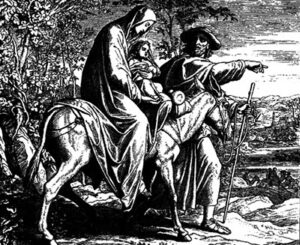
Rome’s main interest in Egypt was the delivery of grain from Egypt to Rome. Egypt was in fact the wealthiest overseas province of the Roman Empire. No change was made to the Egyptian system of government by the by the Romans. They did not desecrate their temples, customs and religion just to ensure the continuous delivery of grains to Rome. The culture, civic life and education in Egypt largely remained Greek because the Romans didn’t settle in Egypt in large numbers. The Roman Empire ruled Egypt until 639 A D when the Arabs invaded Egypt.
The Meroe Kingdom
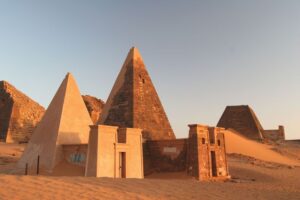
Meroe was a kingdom in the southern part of Egypt which lasted from 542 B.C to 400 A.D. Meroe was the southern capital of the Kush Kingdom which is located in the present day Sudan. During the time of Jesus, Meroe was a flourishing kingdom with many building projects which were undertaken.
Meroe was ruled by Queen Amanitore from 1 B.C and her reign ended when Jesus was 5 years old, and Queen
Amanitaraqide ruled from 21 A.D. to 41 A.D. Both Queens are remembered as warrior queens who led their armies in battle.
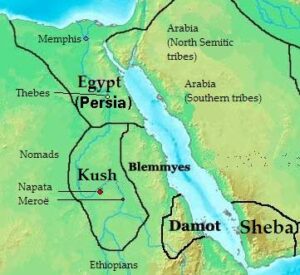
Due to the dates of her reign, Queen Amanitaraqide was made reference in the Bible during a conversation about the Ethiopian Eunoch in the book of Act 8:26.
Africans were restoring temples that were destroyed by the Romans during their reign. The Africans were also building water reservoirs during this period. As a matter of fact, the most prosperous period in Meroitic history was during the time of Jesus Christ when the Nubians built two hundred pyramids.
Aksum Kingdom
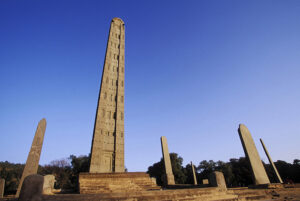
The kingdom of Aksum or Axum, was an ancient kingdom that was located in the present day Eritrea. This kingdom existed from 80 B.C to 825 A D but it became prominent during the 1st century A D, which was the same time that Jesus lived on Earth. Aksum was a major commercial route between ancient India and the Roman Empire.
The rulers of Aksum facilitated trade by minting their own currency. Eventually, they extended their rule to the Himyarite Kingdom. where they became one of the four great powers at that time which included China, Rome and Persia.
The Nok People
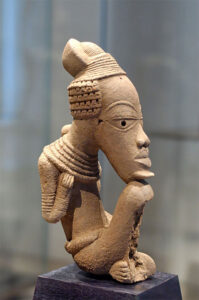
Between 1 A D and 40 A D, West Africa experienced a remarkable civilisation which was known as the Nok culture. This civilisation thrived in the Northern parts of Nigeria of today.
The Nok society was very advanced with a complex judicial system and they were the earliest producers of life-sized terracotta in the Sub Sahara. Among artifacts found about the Nok people are bracelets, small knives and spears.
The most intriguing aspect of the culture was their Terracotta Statues. These statues have been described as ageless, beautiful, remarkable and even extraterrestrial.
Their life-sized statues isn’t the only evidence in the advancement of the Nok society. Research has proven that the Nok people had a very developed system of administration which ensured law and order.
The Nok people had different types of courts which were used for adjudicating cases for both civil and minor cases which ranged from little cases of stealing to worse cases of adultery and m*rder.
A chief priest presided over the court along with different clan heads. If anyone was found guilty, the person would have to pay a fine of goats, local wine and chickens. The town would then pick a day to celebrate the grace of their god for successfully resolving the case.
The People Of The Benin Kingdom
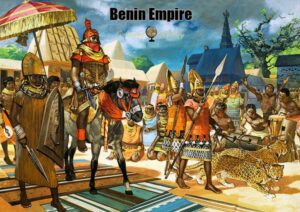
The Nok Kingdom of Igodomigodo which was later known as Benin in the southern part of the present day Nigeria, also in existence back then. The ruler of the Benin Kingdom was known as Ogiso which means “a ruler from the sky”. During the time of Jesus, two popular rulers of the Benin Kingdom reigned, they are Ogiso Igodo and Ogiso Ere.
An ambitious young man known as Igodo, staged a coup that abolished the Ik’edionwere, an inter-community Council that was set up to take decisions and settle differences between
communities. Igodo went on to declare himself as the Ogiso and set up the Odibo-Ogiso
group to help him consolidate his authority. Igodo declared Ugbekun as his capital and he was accepted by the people of Igodomigodo as their ruler.
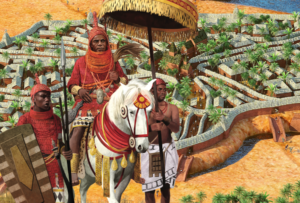
Igodo passed away in 16 A.D when Jesus Christ was around 22 years of age. Igodo was succeeded by Ogiso Ere who went on to rule over the Benin Kingdom for 50 years.
Ogiso Ere was lover of peace, he transferred the capital of the Kingdom from Ugbekun to Uhudumwunrun. At this time, Benin had already become a very sophisticated kingdom.
Ogiso Ere was the first king of the Benin Kingdom to wear a Cowry Crown. He brought so many innovations to his kingdom. The king introduced a guild of wood carvers and carpenters which resulted in so many bronze casting factories in modern-day Benin City.
Ogiso Ere built the first market in Igodomigodo which was named the Ogiso market. He was the inventor of the popular African kingship paraphernalia like the Ada (a sword of honour), Eben (a sword for dancing), Ekete (a royal stool), Agba (a rectangular stool), and Epoki (a leather box). These inventions still serve as a symbol of royal authority in many West African countries.
Other Africans During the Life-Time of Jesus Christ
Other sets of African people existed during the time of Jesus Christ, it’s a comprehensive list of so many people. There were people of Zimbabwe and South Africa during that time. We had the Gokomere and the Ziwa communities who survived by mining and farming.
Africans had their culture, lives, religion, wars, peace and money during the time of Jesus Christ. These Africans did not know about Jesus Christ, his life and legacy during this time.
